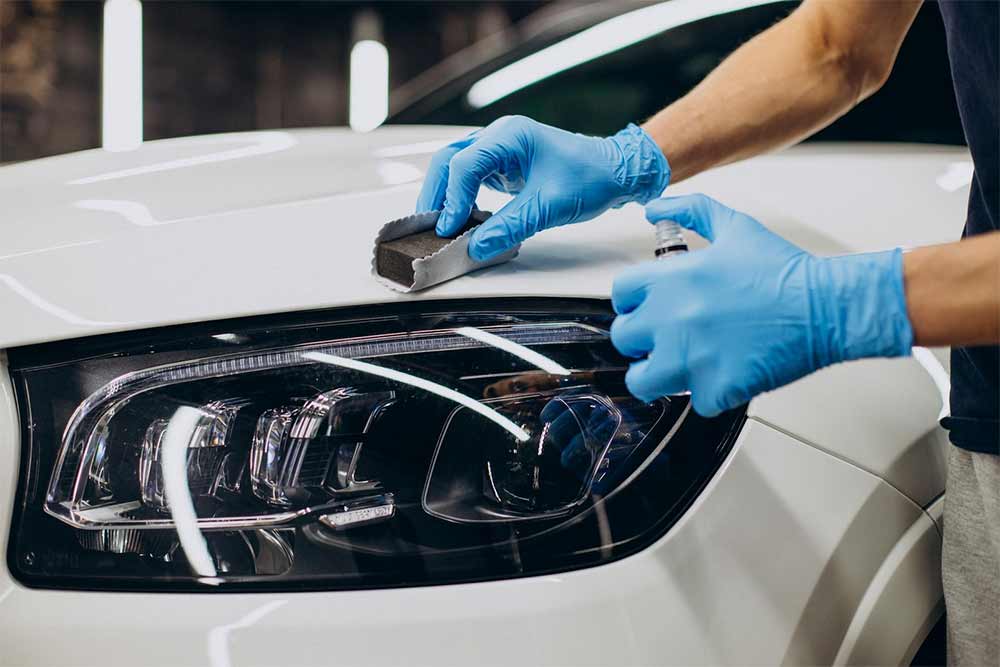In the world of car care and maintenance, there are two terms that you need to be familiar with: “buffers” and “polishers.” So what’s the difference between these two types of tools? A buffer is a household tool that has abrasives attached to its shaft or head. These abrasives come in different types—such as wool, foam, soft cotton and hard rubber—which can help remove scratches from surfaces such as paint jobs, plastic bumpers, etc. Buffing tools can be used on cars, boats (and other vehicles) but these are more commonly used by professional detailers who need to give their clients’ vehicles a perfect finish before presenting them for sale at auctions or trade shows.
A buffer and a polisher have their own set of functions that make them suitable for distinct purposes.
A buffer and a polisher have their own set of functions that make them suitable for distinct purposes.
A buffer is good for light to medium duty work. It can be used for polishing and waxing, but it’s not suitable for heavy-duty buffing or polishing jobs. On the other hand, a polisher is appropriate for any task that requires removing rust, oxidation, corrosion and/or paint defects such as scratches or swirl marks (aka holograms). Polishers are also ideal when you want to apply finishes like sealants or glazes because they produce no swirl marks–so your finish will look perfect!
A buffer is a tool that has abrasives attached to its shaft or head.
A buffer polisher is a tool that has abrasives attached to its shaft or head. It’s used to polish, buff and shine any surface that needs it. Buffing tools can be used on cars, boats and other vehicles as well as for general household cleaning purposes.
They are designed for light to medium-duty work but can be heavy to operate and expensive too buy if you don’t have one already!
Buffing tools can be used on cars, boats, and other vehicles.
Buffers and polishers can be used on cars, boats, and other vehicles. They’re designed to clean and polish all types of surfaces from metal to plastic. Buffers are also great at removing scratches from paintwork or restoring shine to faded plastic trim pieces.
The key difference between a buffer and polisher is the speed at which they work: while a buffer spins at high speeds (500-1,500 RPM), a polisher rotates around 100 times slower (50-150 RPM). This makes it easier for you to control the tool while applying pressure; however it takes longer for you to get through large areas like car hoods or fenders because there’s less contact time between surface being polished and pad/disk used by machine
The best buffing tools (e.g., wool pads) are designed for light to medium-duty work.
The best buffing tools (e.g., wool pads) are designed for light to medium-duty work.
- Use wool pads for polishing and buffing.
- Use foam pads for polishing, buffing, and waxing.
- Use microfiber pads for polishing, buffing, and waxing
A buffer is easy to use, but if you don’t know how to do it properly, it can damage the surface.
A buffer is easy to use, but if you don’t know how to do it properly, it can damage the surface.
If you don’t know what your doing, a buffer can cause more harm than good.
Let’s look at an example: You want to buff out scratches on your car but don’t have any experience using one before so you just start rubbing away with no regard for what direction or pressure needs to be used. You’ll end up with swirl marks all over the place instead of a nice smooth finish!
Buffers can be heavy to operate and expensive to buy.
Buffers are also not recommended for beginners, people with arthritis, or those with weak wrists. Buffers can be heavy and expensive to buy.
Buffer vs Polisher: The Verdict
So which is it? Buffer or polisher? The answer is that it depends on what you’re trying to accomplish. If you want to remove swirls and scratches from your car’s paint job by hand (and who wouldn’t?), then go ahead and grab yourself a buffer. But if you’re looking for machine-level results from a tool that’s easy on the hands and wallet–and doesn’t require any special training–you’ll probably find what you need in an orbital finishing pad attachment for your electric drill.
The best type of buffing tool to use is one with variable speed options.
The best type of buffing tool to use is one with variable speed options. This ensures that you can control the amount of force applied to your paintwork, which will prevent damage to your car’s surface. If you don’t know how to use it properly or don’t have enough experience in using tools like these, then there’s a chance that your results won’t be as good as they could be.
In order to get the best result possible with any buffing tool, determining what kind of pad is required matters as well–not just choosing between buffer vs polisher. You’ll need something that provides just enough friction against the surface without creating too much heat (which could lead to melting).
The weight of the buffing tool is also an important consideration when choosing one.
The weight of the buffing tool is also an important consideration when choosing one. A heavy buffer will wear you down faster than a lighter one, which can make it harder to complete your task. If you’re using a polisher with a long handle, then this will be less of an issue because you’ll be able to keep your body in a more upright position while working on large areas like boat hulls or RV roofs. However, if your work surface is closer to eye level (like when polishing car rims or small parts), then having something lightweight can make all the difference in how comfortable and efficient you feel during use!
If we were talking about weight alone here instead of size/girth considerations then I’d say that larger tools are better suited for big jobs because they offer greater leverage–but since we’re talking about both factors together now…it’s really up in the air as far as which would come out ahead overall when comparing apples-to-apples between two products’ performance capabilities goes:
When using a buffer, it’s important to determine the speed setting and pad type first so that you get the best result possible.
Before you start buffing, it’s important to determine the speed setting and pad type first so that you get the best result possible. In order to do this, there are several things to consider:
- The speed setting of your buffer is going to be determined by how hard or soft your paint job is (i.e., whether it needs more or less friction). If your car has been sitting in storage for years without being driven much at all, then its finish will have become quite dull and may require a higher-speed buff than if yours was recently waxed and polished every month or two.
- The right pad type depends on both what kind of material you’re working on–for example, metal versus plastic–and also whether or not there are any scratches already present on said material before starting work with either tool listed above here today
Polishing, on the other hand, involves using very fine grit sandpaper and rubbing it against the surface you’re working on.
Polishing is a mechanical process. It uses a rotating abrasive pad to rub against the surface you’re working on, and this action removes small amounts of material from the top layer of your car’s paint. A polisher pushes these tiny pieces of grit away from its surface, which causes them to collect in an area known as “plugs” or “swirl marks.” These can be removed by hand with more fine-grit sandpaper (or by using another machine), but they leave behind a smoother texture than what existed before polishing started.
Polishers come in many shapes and sizes; some are handheld while others are mounted onto stands with wheels attached for easier maneuverability. Some machines use circular motions while others use straight lines across flat surfaces–and both methods work well for different types of jobs!
After polishing your car’s paint job or furniture’s finish by hand, you will need to apply a coat of wax or a sealant in order to protect it from scratches and wear and tear damage in the future.
After polishing your car’s paint job or furniture’s finish by hand, you will need to apply a coat of wax or a sealant in order to protect it from scratches and wear and tear damage in the future. Polishing is just one step in the process of restoring old finishes that have dulled over time; waxing is another important step that should be done after polishing.
Waxes are usually made up of carnauba wax with other ingredients added in depending on what type of results they provide (glossy or satin). These products can be applied by hand using a soft cloth or machine buffed onto surfaces with an orbital buffer or rotary buffer tool designed specifically for this purpose.
In short, a buffer is not the same as a polisher; these two tools have their own distinct uses and functions.
So, what’s the difference?
A buffer is a tool used for light to medium-duty work. It has a smaller head, so it can get into tight spaces and corners. The purpose of using a buffer is to remove scratches, swirl marks and oxidation from your paint job before applying wax or polish. Buffers are also used for polishing metal surfaces such as aluminum trim pieces on cars or boats.
Buffers typically come with different speeds ranging from 2,000 rpm (rotations per minute) up to 6,500 rpm when they’re set at full speed–and they may have extra features like variable speed controls so you can adjust how fast or slow you want your machine running when working on different materials or surfaces.
Takeaway
In conclusion, it’s important to note that while these two tools have similar functions (like polishing), they are not the same. The best way to tell them apart is by looking at their heads and shafts; if there are abrasives attached to them then it’s probably a buffer. If not, then you’re probably holding something else in your hand–like a polisher!

